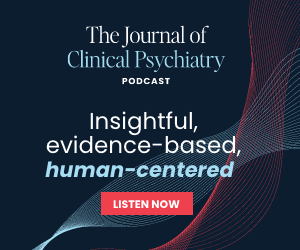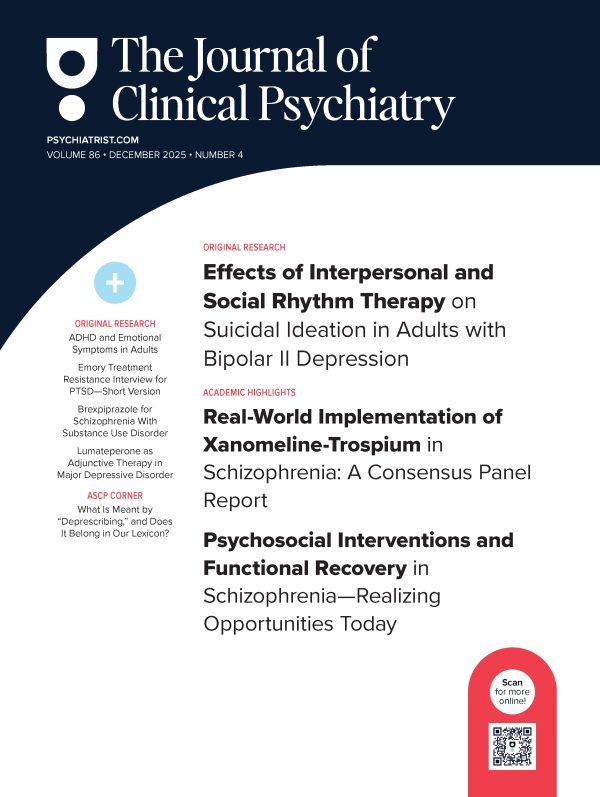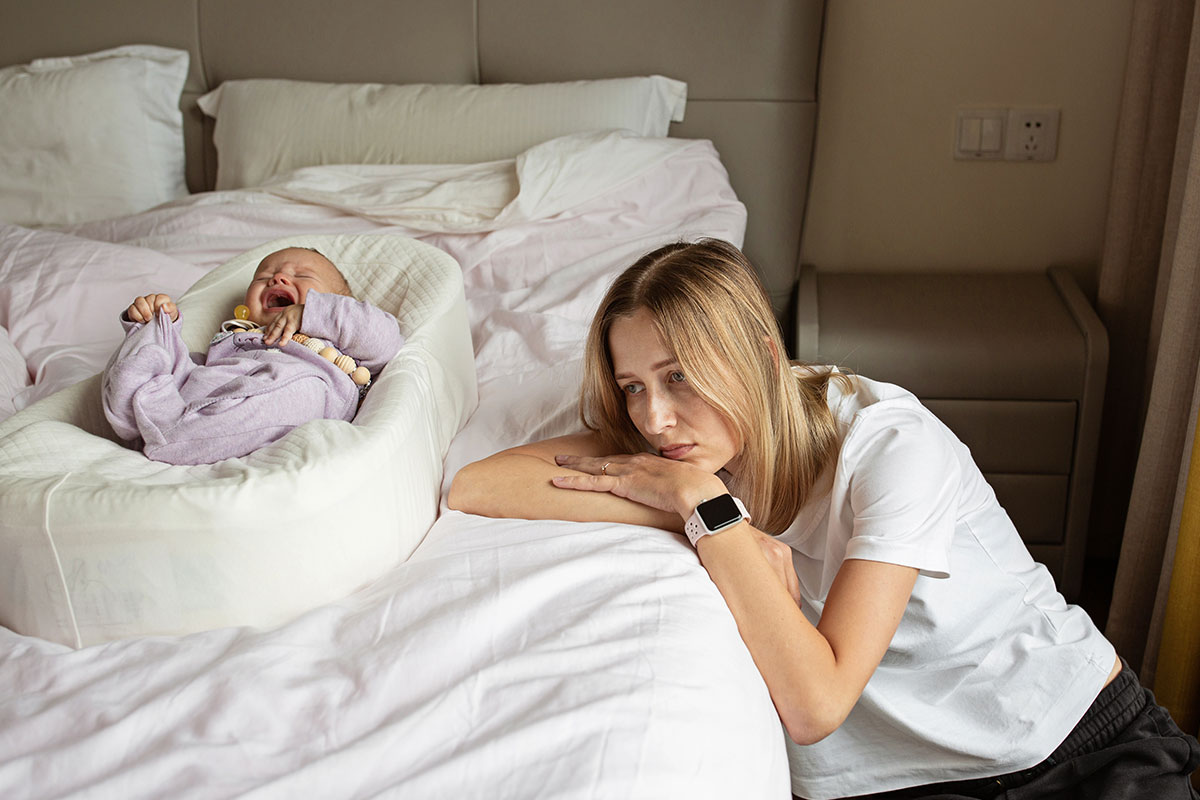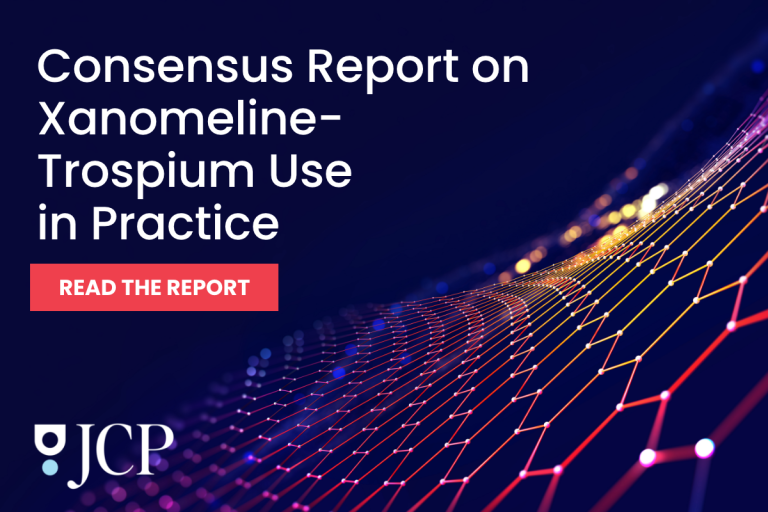
Abstract
Objective: Brief social contact–based video interventions are effective in decreasing self-stigma and increasing treatment-seeking intentions. The present study is the first to target essential workers with self-reported anxiety, depression, and posttraumatic stress disorder (PTSD) symptoms during the COVID-19 pandemic. We hypothesized that viewers of the intervention would show greater increases in treatment-seeking intentions than nonviewers and that those without prior mental health diagnoses or care would have larger increases than those with past mental health care engagement. Additionally, participants who were more emotionally engaged with the intervention would experience greater treatment-seeking intention increases.
Methods: This randomized controlled trial recruited 1,309 essential workers via crowdsourcing who self-reported threshold levels of anxiety, depression, or PTSD symptoms to view either a brief social contact–based video intervention or a control video. Participants’ treatment-seeking intentions were assessed using 3 items from the Attitudes Toward Seeking Professional Psychological Help–Short Form at baseline, immediately postintervention, and 30 days afterward.
Results: Generalized estimating equation (GEE) analyses revealed an immediate group-by-time effect of increased treatment-seeking intentions in the intervention group (P = .006, Cohen d = 0.22). Further GEE analyses revealed significant effects among individuals in the intervention group without prior psychiatric diagnoses (P < .001, Cohen d = 0.41), as compared to those with psychiatric diagnoses, and among those without prior treatment experience (P < .001, Cohen d = 0.40) compared to those who had. Participants who were more emotionally engaged experienced significantly greater increases in treatment-seeking intentions (P < .001).
Conclusion: All hypotheses were supported, indicating the efficacy of a brief video intervention in increasing treatment-seeking intentions among essential workers with clinical needs. These results highlight the ability of brief, easily disseminated interventions to reach those most in need of care and effectively increase treatment-seeking intentions.
Trial Registration: Trial identifier: NCT05826132.
J Clin Psychiatry 2025;86(4):25m15881
Author affiliations are listed at the end of this article.
Members Only Content
This full article is available exclusively to Professional tier members. Subscribe now to unlock the HTML version and gain unlimited access to our entire library plus all PDFs. If you’re already a subscriber, please log in below to continue reading.
References (48)

- Center C, Davis M, Detre T, et al. Confronting depression and suicide in physicians: a consensus statement. JAMA. 2003;289(23):3161–3166. PubMed CrossRef
- Clement S, Schauman O, Graham T, et al. What is the impact of mental health-related stigma on help-seeking? A systematic review of quantitative and qualitative studies. Psychol Med. 2015;45(1):11–27. PubMed CrossRef
- Pattyn E, Verhaeghe M, Sercu C, et al. Public stigma and self-stigma: differential association with attitudes toward formal and informal help seeking. Psychiatr Serv. 2014;65(2):232–238. PubMed CrossRef
- Topkaya N. Gender, self-stigma, and public stigma in predicting attitudes toward psychological help-seeking. Educ Sci Theor Pract. 2014;14(2):480–487.
- van der Burgt MCA, Beekman ATF, Hoogendoorn AW, et al. The impact of a suicide prevention awareness campaign on stigma, taboo and attitudes towards professional help-seeking. J Affect Disord. 2021;279:730–736. PubMed CrossRef
- Corrigan PW, Michaels PJ, Vega E, et al. Key ingredients to contact-based stigma change: a cross-validation. Psychiatr Rehabil J. 2014;37(1):62–64. PubMed CrossRef
- Thornicroft G, Mehta N, Clement S, et al. Evidence for effective interventions to reduce mental-health-related stigma and discrimination. Lancet. 2016;387(10023):1123–1132. PubMed CrossRef
- Amsalem D, Fisch CT, Wall M, et al. The role of income and emotional engagement in the efficacy of a brief help-seeking video intervention for essential workers. J Psychiatr Res. 2024;173:232–238. PubMed CrossRef
- Brown S. The effectiveness of two potential mass media interventions on stigma: video-recorded social contact and audio/visual simulations. Community Ment Health J. 2020;56(3):471–477. PubMed CrossRef
- Makhmud A, Thornicroft G, Gronholm PC. Indirect social contact interventions to reduce mental health-related stigma in low- and middle-income countries: systematic review. Epidemiol Psychiatr Sci. 2022;31:e79. PubMed CrossRef
- Amsalem D. Social media–based brief video interventions to support youths’ mental health. Psychiatr Serv. 2025;76(1):95–98. PubMed CrossRef
- Haim-Nachum S, Martin A, Fisch CT, et al. Reducing self-stigma among survivors of childhood maltreatment: randomized controlled trial of a brief video intervention. Psychol Trauma. 2025;17(Suppl 1):S186–S195. PubMed CrossRef
- Amsalem D, Wall M, Lazarov A, et al. Brief video intervention to increase treatment-seeking intention among U.S. health care workers: a randomized controlled trial. Psychiatr Serv. 2023;74(2):119–126. PubMed CrossRef
- Amsalem D, Wall M, Lazarov A, et al. Destigmatising mental health treatment and increasing openness to seeking treatment: randomised controlled trial of brief video interventions. BJPsych Open. 2022;8(5):e169. PubMed CrossRef
- Epstein RM, Duberstein PR, Feldman MD, et al. “I Didn’t Know what was Wrong:” how people with undiagnosed depression recognize, name and explain their distress. J Gen Intern Med. 2010;25(9):954–961. PubMed CrossRef
- Gulliver A, Griffiths KM, Christensen H. Perceived barriers and facilitators to mental health help-seeking in young people: a systematic review. BMC Psychiatry. 2010;10(113):1–9. PubMed
- Mojtabai R, Olfson M, Mechanic D. Perceived need and help-seeking in adults with mood, anxiety, or substance use disorders. Arch Gen Psychiatry. 2002;59(1):77–84. PubMed CrossRef
- Galanis P, Vraka I, Fragkou D, et al. Nurses’ burnout and associated risk factors during the COVID-19 pandemic: a systematic review and meta-analysis. J Adv Nurs. 2021;77(8):3286–3302. doi:10.1111/jan.14839. PubMed CrossRef
- Leo CG, Sabina S, Tumolo MR, et al. Burnout among healthcare workers in the COVID 19 era: a review of the existing literature. Front Public Health. 2021;9:750529. PubMed CrossRef
- Czeisler MÉ, Lane RI, Petrosky E, et al. Mental health, substance use, and suicidal ideation during the COVID-19 pandemic — United States, June 24–30, 2020. MMWR Morb Mortal Wkly Rep. 2020;69(32):1049–1057. PubMed CrossRef
- Hutchison SM, Watts A, Gadermann A, et al. School staff and teachers during the second year of COVID-19: higher anxiety symptoms, higher psychological distress, and poorer mental health compared to the general population. J Affect Disord Rep. 2022;8:100335. PubMed CrossRef
- Taylor WD, Blackford JU. Mental health treatment for front-line clinicians during and after the coronavirus disease 2019 (COVID-19) pandemic: a plea to the medical Community. Ann Intern Med. 2020;173(7):574–575. PubMed CrossRef
- Hawes MT, Szenczy AK, Klein DN, et al. Increases in depression and anxiety symptoms in adolescents and young adults during the COVID-19 pandemic. Psychol Med. 2022;52(14):3222–3230. PubMed CrossRef
- Zhang W, Walkover M, Wu YY. The challenge of COVID-19 for adult men and women in the United States: disparities of psychological distress by gender and age. Public Health. 2021;198:218–222. PubMed CrossRef
- Amsalem D, Fisch CT, Wall M, et al. Anxiety and depression symptoms among young U.S. Essential workers during the COVID-19 pandemic. Psychiatr Serv. 2023;74(10):1010–1018. PubMed CrossRef
- Salaheddin K, Mason B. Identifying barriers to mental health help-seeking among young adults in the UK: a cross-sectional survey. Br J Gen Pract. 2016;66(651):e686–e692. PubMed CrossRef
- Amsalem D, Markowitz JC, Jankowski SE, et al. Sustained effect of a brief video in reducing public stigma toward individuals with Psychosis: a randomized controlled trial of young adults. Am J Psychiatry. 2021;178(7):635–642. PubMed CrossRef
- Hopmeyer A, Medovoy T. Emerging adults’ self-Identified peer crowd affiliations, risk behavior, and social–emotional adjustment in college. Emerg Adulthood. 2017;5(2):143–148. CrossRef
- Moses T. Self-labeling and its effects among adolescents diagnosed with mental disorders. Soc Sci Med. 2009;68(3):570–578. PubMed CrossRef
- Palan S, Schitter C. Prolific.ac—a subject pool for online experiments. J Behav Exp Finance. 2018;17:22–27. CrossRef
- Peer E, Brandimarte L, Samat S, et al. Beyond the Turk: alternative platforms for crowdsourcing behavioral research. J Exp Soc Psychol. 2017;70:153–163. CrossRef
- Amsalem D, Jankowski SE, Pagdon S, et al. “It’s tough to be a Black man with schizophrenia”: randomized controlled trial of a brief video intervention to reduce public stigma. Schizophr Bull. 2024;50(3):695–704. PubMed CrossRef
- Amsalem D, Jankowski SE, Markowitz JC, et al. Comparing brief video interventions to reduce public and self-stigma: randomized control trial. Early Interv Psychiatry. 2024;18(10):839–847. PubMed CrossRef
- Spitzer RL, Kroenke K, Williams JBW, et al. A brief measure for assessing generalized anxiety disorder: the GAD-7. Arch Intern Med. 2006;166(10):1092–1097. PubMed CrossRef
- Kroenke K, Spitzer RL, Williams JBW. The PHQ-9: validity of a brief depression severity measure. J Gen Intern Med. 2001;16(9):606–613. PubMed CrossRef
- Prins A, Bovin MJ, Smolenski DJ, et al. The Primary Care PTSD Screen for DSM-5 (PC-PTSD-5): Development and Evaluation within a veteran primary care sample. J Gen Intern Med. 2016;31(10):1206–1211. PubMed CrossRef
- Elhai JD, Schweinle W, Anderson SM. Reliability and validity of the Attitudes Toward Seeking Professional Psychological Help Scale-Short Form. Psychiatry Res. 2008;159(3):320–329. PubMed CrossRef
- de Vreede T, Andel S, Vreede GJde, et al. What is engagement and how do we measure it? toward a domain independent definition and scale. In: Hawaii Int Conf Syst Sci 2019 HICSS-52:749–758. Published online January 8, 2019.
- Vens M, Ziegler A. Generalized estimating equations and regression diagnostics for longitudinal controlled clinical trials: a case study. Comput Stat Data Anal. 2012;56(5):1232–1242. CrossRef
- Zeger SL, Liang KY. Longitudinal data analysis for Discrete and continuous outcomes. Biometrics. 1986;42(1):121–130. PubMed CrossRef
- Amsalem D, Haim-Nachum S, Lazarov A, et al. Brief video intervention to increase treatment-seeking among individuals living in a conflict zone: a randomized controlled trial. Psychiatry Res. 2025;343:116280. PubMed CrossRef
- Andrade LH, Alonso J, Mneimneh Z, et al. Barriers to mental health treatment: results from the WHO World Mental Health surveys. Psychol Med. 2014;44(6):1303–1317. PubMed CrossRef
- Wang PS, Aguilar-Gaxiola S, Alonso J, et al. Use of mental health services for anxiety, mood, and substance disorders in 17 countries in the WHO world mental health surveys. Lancet. 2007;370(9590):841–850. PubMed CrossRef
- Amsalem D, Jankowski SE, Fisch CT, et al. Leveraging brief video interventions to increase treatment-seeking among depressed youth: a randomized controlled trial. World Psychiatry. 2025;24(2):282–283. PubMed CrossRef
- United States Census Bureau. U.S. Census Bureau QuickFacts: United States. United States Census Bureau; 2024. https://www.census.gov/quickfacts/fact/table/US/PST045224.AccessedMarch17,2025.
- Schwarz N. Self-reports: how the questions shape the answers. Am Psychol. 1999;54(2):93–105. CrossRef
- Koike S, Yamaguchi S, Ojio Y, et al. A randomised controlled trial of repeated filmed social contact on reducing mental illness-related stigma in young adults. Epidemiol Psychiatr Sci. 2018;27(2):199–208. PubMed CrossRef
- Yamaguchi S, Ojio Y, Ando S, et al. Long-term effects of filmed social contact or internet-based self-study on mental health-related stigma: a 2-year follow-up of a randomised controlled trial. Soc Psychiatry Psychiatr Epidemiol. 2019;54(1):33–42. PubMed CrossRef





